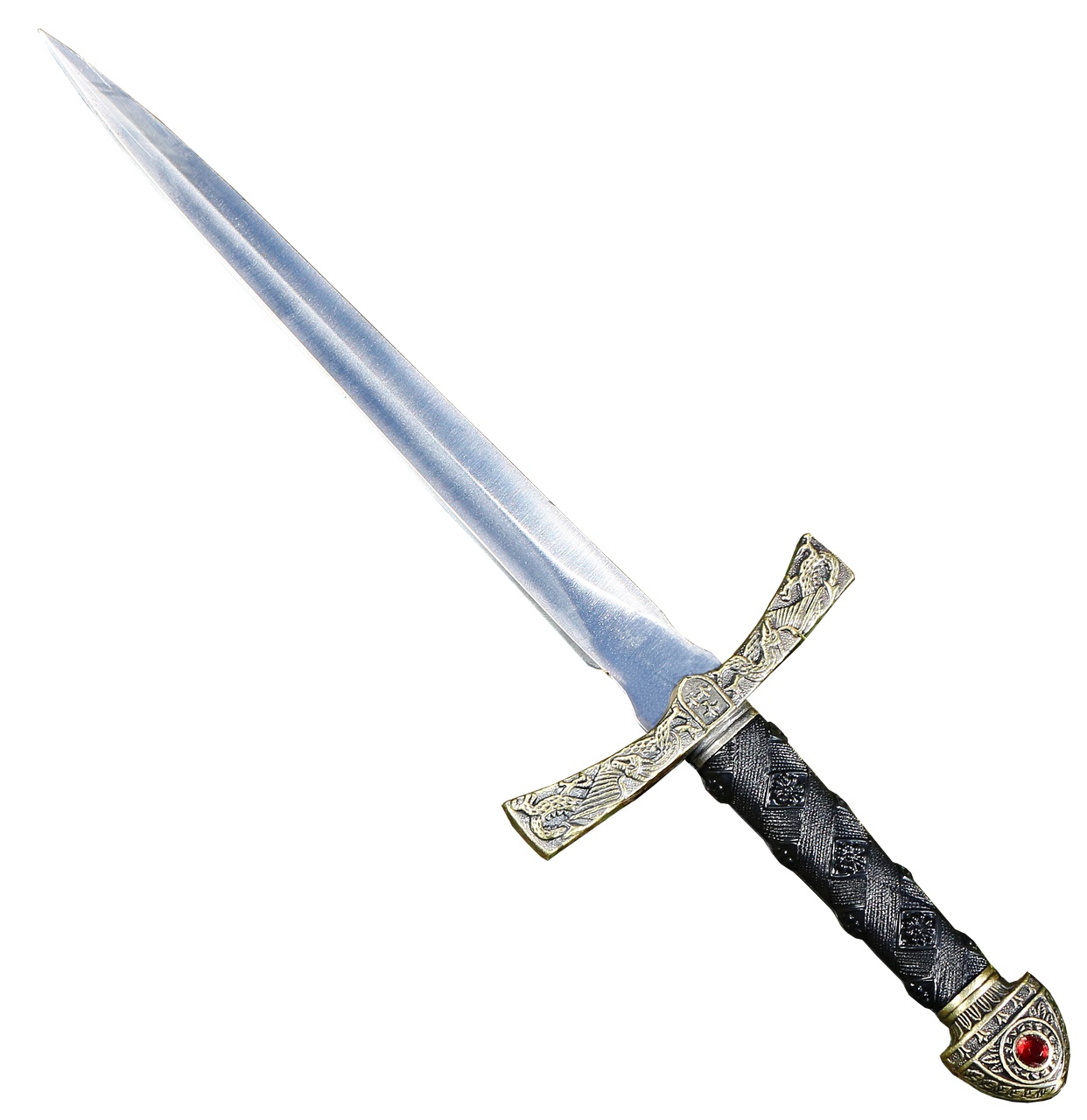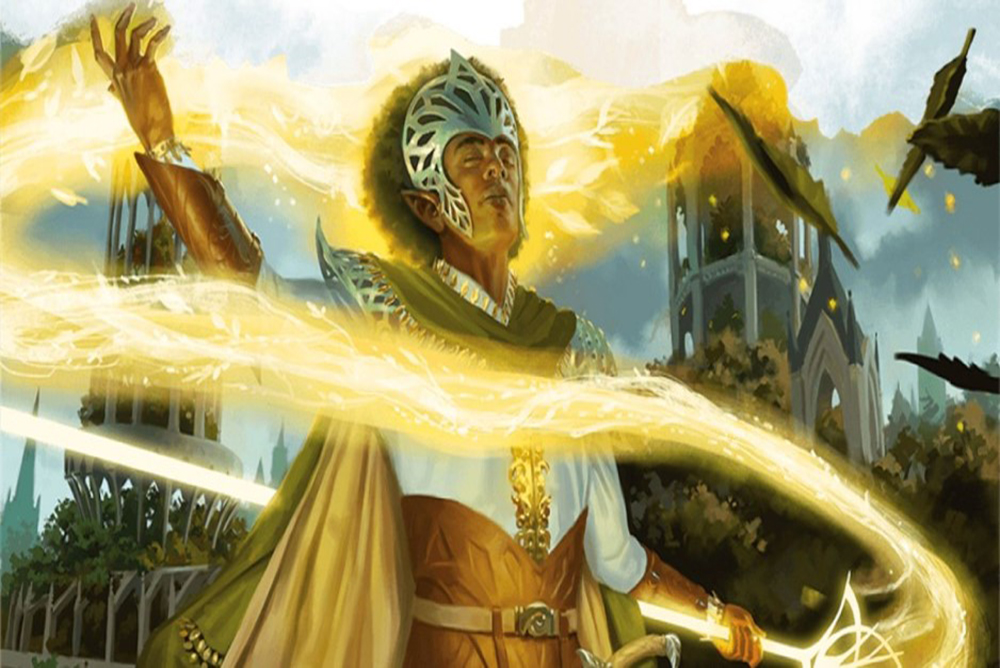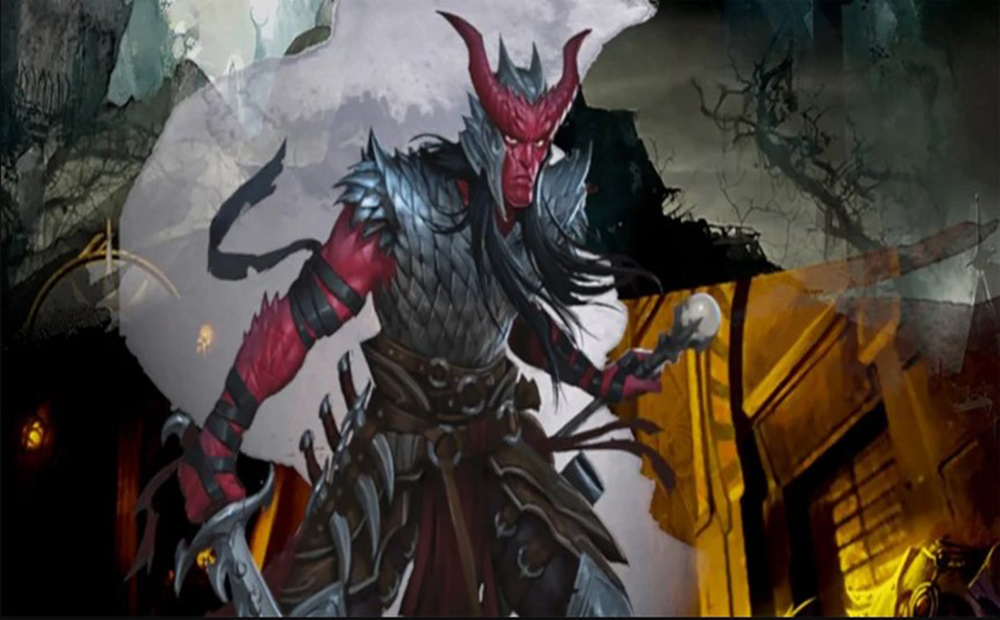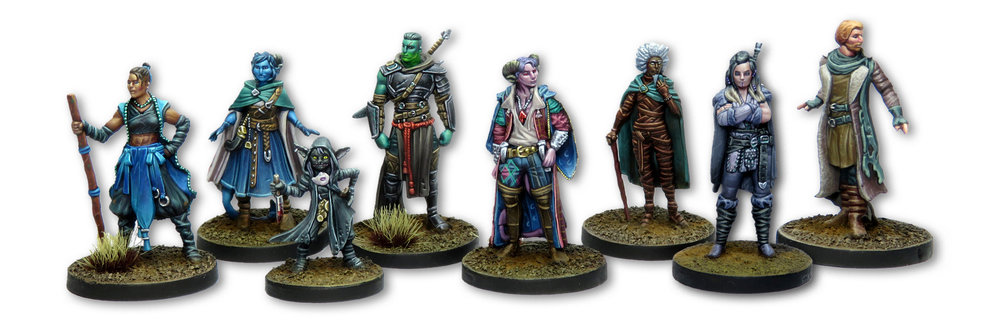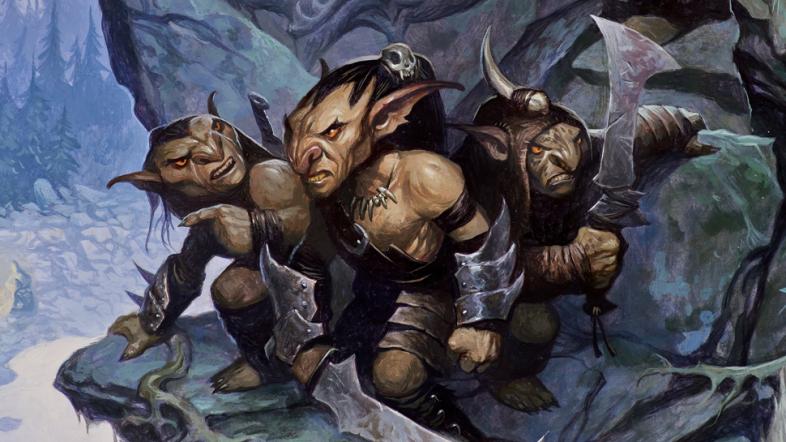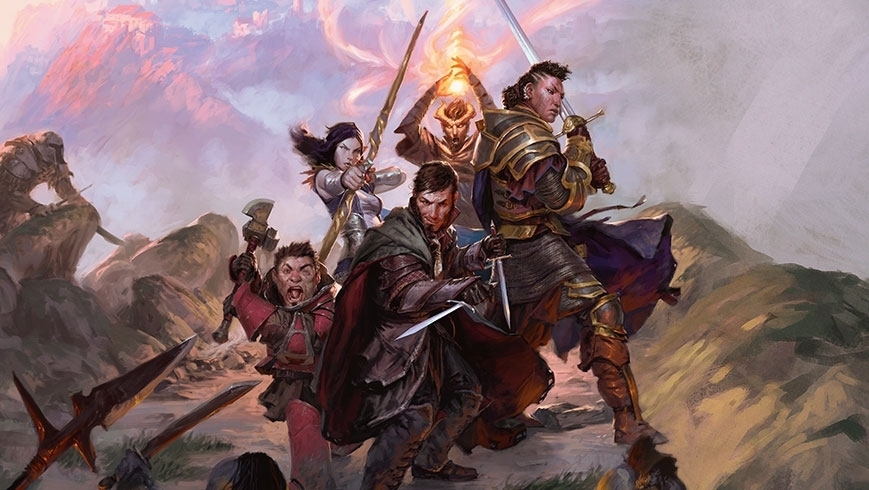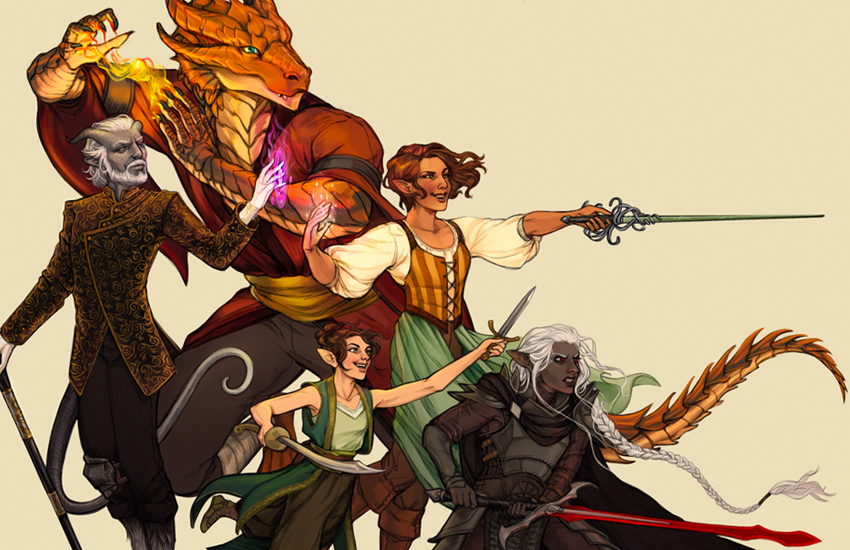
Updated:
02 Nov 2021
A party is not complete without a rogue! I enjoy playing a rogue in my current D&D 5e campaign and adore the description of a rogue in the D&D Player’s Handbook: “Every town and city has its share of rogues. Most of them live up to the worst stereotypes of the class, making a living as burglars, assassins, cutpurses, and con artists. Often, these scoundrels are organized into thieves’ guilds or crime families.”
Through hours of both game play and research, I have created five amazing builds for your next rogue! The builds are based on the three roguish archetypes used in D&D 5E: Arcane Trickster, Assassin, and Thief. If you decide to go rogue, read on to find out how!
5. Arcane Trickster (Human)
Image
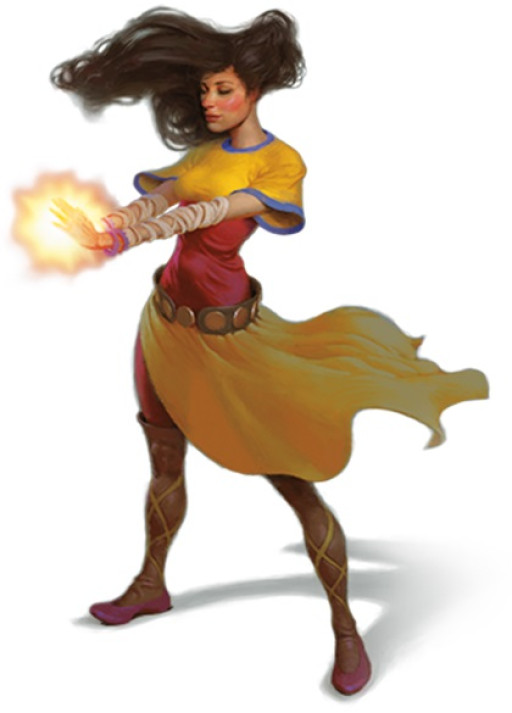
The Arcane Trickster combines the worlds of magic and thievery. According to the D&D Player’s Handbook, “Some rogues enhance their fine-honed skills of stealth and agility with magic, learning tricks of enchantment and illusion. These rogues include pickpockets and burglars, but also pranksters, mischief-makers, and a significant number of adventurers.” If the PC can hold on and survives the first two levels, Arcane Tricksters are awarded the ability to cast both cantrips and spells at third level. If you would like to try this Archetype out, read about the rogue build below!
Build Details:
- As a Human, all your Ability Scores are increased by 1.
- Dexterity needs to be your highest Ability Score with a minimum score of 13, followed by Intelligence for the Arcane Trickster, since spells are learned, used, and occasionally pilfered. If your character wants to be schmoozy, the 3rd best Ability Score needs to be Charisma.
- The D&D Player’s Handbook recommends for rogues to use the charlatan background.
- To determine hit points, your rogue rolls 1d8 for each level. At 1st Level, rogues start at 8 plus a Constitution modifier. After Level 1, the hit points are configured by 1d8 plus your Constitution modifier.
- Rogues can wear Light Armor (thankfully), carry different types of weaponry including simple weapons, hand crossbows, longswords, rapiers, and shortswords. In addition, rogues carry Thieves Tools.
- Rogues enjoy Saving Throws of Dexterity and Intelligence and can choose four skills of Proficiency.
- At 3rd level, Arcane Tricksters earn three cantrips, including magic hands and two others; Also at 3rd level, three 1st level spells are learned. Concerning magic hands, the rogue can make the hand invisible and stow and/or retrieve an object in a container worn by someone else, or they can use the hands to use thieves’ tools from a distance to pick locks or safely remove traps.
- At 9th level, the rogue earns the Magical Ambush spell, at 10th level, another cantrip is awarded, at 13th level magic hands can distract opponents. Finally, at 17th Level, the rogue can steal the know-how of casting a spell from another spell caster. (That’s brutal!)
4. Assassin (Human)
Image
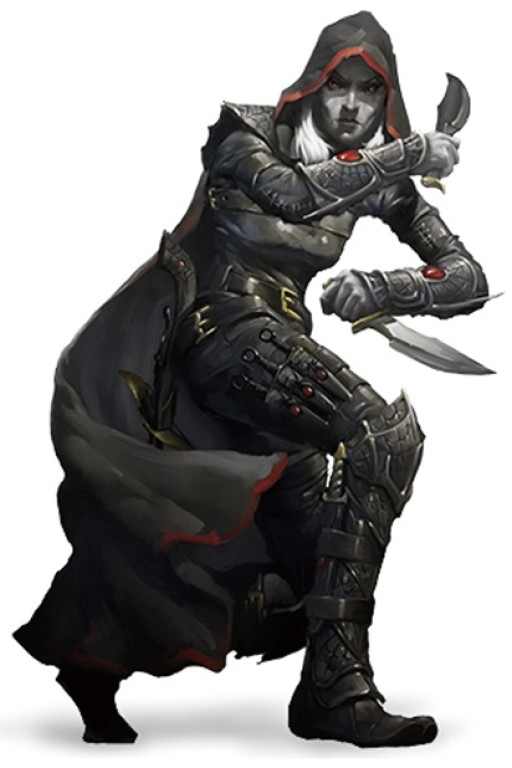
If you want to play a more murderous sort of rogue, the Assassin Archetype is the best one to use to become the masters of disguise and death! The D&D Player’s Handbook states that “You focus your training on the grim art of death. Those who adhere to this archetype are diverse: hired killers, spies, bounty hunters, and even specially anointed priests trained to exterminate the enemies of their deity. Stealth, poison, and disguise help you eliminate your foes with deadly efficiency.” The fun of being an assassin really starts at 3rd Level. Read on to find out more about the Assassin Build!
Build Details:
- Humans have the advantage of an increase of 1 to all Ability Scores.
- As with all rogues, Dexterity needs to be the highest Ability Score with a minimum score of 13.
- The D&D Player’s Handbook recommends for rogues to use the charlatan background.
- An Assassin rogue’s hit points are determined by a roll of 1d8 for each level. At 1st Level, rogues start at 8 plus a Constitution modifier. After Level 1, the hit points are configured by 1d8 plus your Constitution modifier.
- Assassins can wear Light Armor (the quieter the better so they can sneak up on opponents), carry several types of weaponry to use to kill including simple weapons, hand crossbows, longswords, rapiers, and shortswords.
- All Assassin Rogues have Saving Throws of Dexterity and Intelligence and are able to choose up to four skills of Proficiency.
- At Level 3 (seems to be the level where the magic begins), Assassins earn proficiencies with a disguise and a poisoner’s kit! Also, at Level 3, Assassin rogues have an advantage on attacking opponents. The D&D Player’s Handbook states that assassins “have advantage on attack rolls against any creature that hasn’t taken a turn in the combat yet. In addition, any hit you score against a creature that is surprised is a critical hit.”
- Level 9 is where the fun impostor opportunities arise, as assassins can create identities. This deception will cost the assassin 25 gp and a week’s worth of studying up on the identity.
- Lucky 13th Level will bring the assassin to the point of Impostor. This nifty trick allows the assassin to copy another being’s behavior, speech, and writing. (This is very cool if you are trying to pull someone out of hiding.)
- Finally, at Level 17, there is Death Strike. The assassin can use its powers to kill. According to the D&D Player’s Handbook, “When you attack and hit a creature that is surprised, you must make a Constitution saving throw (DC 8+Dexterity modifier + your proficiency bonus. On a failed save, double the damage of your attack against the creature.”
3. Assassin (Tiefling)
Image
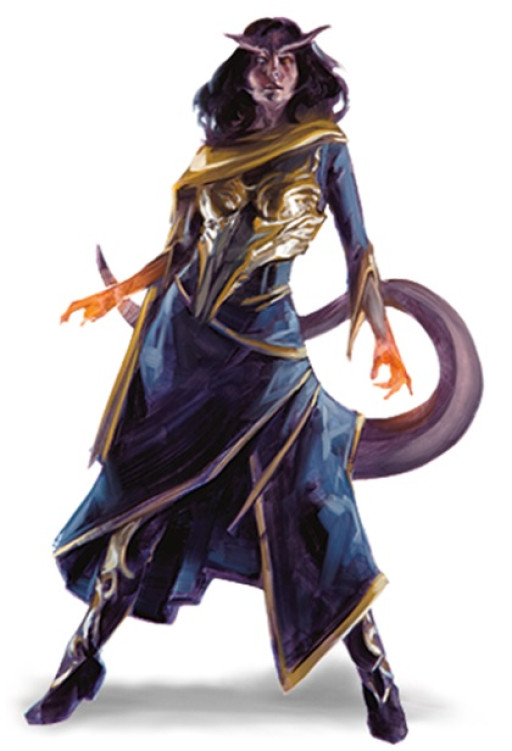
If you want to horn in and make your character a Tiefling Assassin, that would be an effective Archetype and a deadly build! Tieflings literally derive from Infernal Sources. (Thanks, Asmodeus! You can go back home to Hell now.) Usually, Tieflings are either charismatic (overcompensating for the bloodline) or suspicious (owning the bloodline). Like all other characters, Tieflings start as 1st Level Rogues until reaching 3rd Level. The PC’s backstory for becoming a Tiefling could be a significant part of the campaign. The D&D Player’s Handbook states that “Tieflings subsist in small minorities found mostly in human cities or towns, often in the roughest quarters of those places, where they grow up to be swindlers, thieves, or crime lords.” To learn more about the Rogue Assassin build, please keep reading!
Build Details:
- Tieflings enjoy a +1 Ability Score in Intelligence and a +2 in Charisma.
- To be a Tiefling Assassin, your Dexterity Ability Score must be at least 13. (It should be your highest score.) It is also a wise choice to keep your Charisma score high as well, because all Tieflings can cast spells.
- Having hellish genetics is advantageous, as Tieflings have resistance to fire-type damage, can see in the dark (Darkvision), and are bilingual in Common and Infernal.
- At 3rd Level, Tieflings gain Infernal Legacy, which is a Cantrip. Also, at Level 3,Tiefling Rogues can become Assassins and earn proficiencies with disguises and a poisoner’s kit! Also, at Level 3, Assassin rogues have an advantage on attacking opponents. Tiefling Rogue Assassins also can use the Hellish Rebuke Spell.
- At 5th Level, Tieflings gain the Darkness Spell. (These spells are based on the Tiefling race, not the Rogue class.)
- At Level 9, the Tiefling Rogue Assassin can pay 25 gp and go study another being’s history for a week to infiltrate and take over an identity.
- On the 13th Level, Tiefling Assassins will become Impostors. This allows Assassins to copy another being’s behavior, speech, and writing. (Hopefully, there will be a disguise to hide the Tiefling horns!) Finally, at Level 17, there is Death Strike.
- Hit points for Tieflings are based on the Rogue class, rolling 1d8 for each level. On the 1st Level, Rogues start at 8 plus a Constitution modifier. After Level 1, the hit points are configured by 1d8 plus your Constitution modifier.
- Tiefling Assassin Rogues may sport light armor, carry different types of weaponry including simple weapons, hand crossbows, longswords, rapiers, and shortswords. In addition, rogues carry Thieves Tools. (I would check with your DM if Assassins may carry them as well.)
- Rogues enjoy Saving Throws of Dexterity and Intelligence and can choose four skills of Proficiency.
2. Thief (Half-Elven)
Image

This is the Archetype and Build that I have with my character, Veara. There are benefits of playing a Half-Elven Rogue Thief! One of the benefits is age; Half-Elves live significantly longer than Humans. In fact, they can live for almost 200 years. Also, Half-Elves make great adventurers since they do not fit in the Elven world or in the Human world, so they venture out on campaigns! If you are interested in creating a Half-Elven Rogue Thief, keep reading to learn more!
Build Details:
- To become a Rogue Thief, you must have a Dexterity Ability Score of at least 13, preferably higher.
- Half-Elves will increase their Charisma Ability Score by +2. Half-Elves are known to be diplomats, that is why they have a +2 increase on Charisma. They can charm their opponents and then rob them. In addition, they can increase any other Ability Scores by +1. I recommend Dexterity and Intelligence.
- Half-Elves enjoy up to 60 ft of Darkvision; they can see well in the dark, which will be advantageous for a Rogue Thief!
- Also, Half-Elves have Fey Ancestry, meaning they may be masters of charm, but cannot be schmoozed easily (saving throws against charm spells). They are immune to sleep spells.
- In addition to the four skills such as Acrobatics, Athletics, Deception, Insight, Intimidation, Investigation, Perception, Performance, Persuasion, Sleight of Hand, and Stealth, Half-Elves have two additional skill proficiencies, and are trilingual in Common, Elvish, and another language. According to the D&D Player’s Handbook, “At 6th Level, you can choose two or more of your proficiencies (in skills or thieves tools) to gain this benefit.”
- Like all the other rogues mentioned, the hit points for this build are 1d8 per rogue level, and at 1st level, the PC has 8 hit points plus Constitution modifier on the 2nd Level and up.
- Half-Elf Rogue Thieves can wear Light Armor (I cannot imagine a stealthy thief wearing chain mail armor), simple weapons and hand crossbows, longswords, rapiers (I have a magical rapier), shortswords, and Thieves’ Tools.
- This character also has saving throws in Dexterity and Intelligence.
1. Thief (Human)
Image
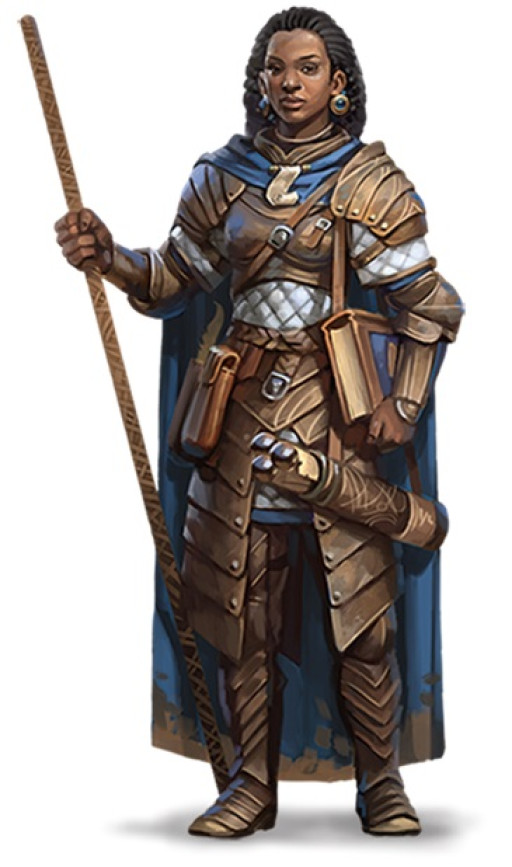
Last on the list is the Human Rogue Thief. This character has been around since the 1st Edition of D&D. There is a good reason why Rogues have been around, as the D&D Player’s Handbook states that “Rogues devote as much effort to mastering the use of a variety of skills as they do to perfecting their combat abilities, giving them a broad expertise that few other characters can match.” Read on to find out more about the tried-and-traditional Rogue Thief Build!
Build Details:
- Add +1 to all Ability Scores since you are playing a Human character.
- Humans speak Common and one other language of the PC’s choosing. If your thief is charismatic, it is a wise idea to choose the language where the campaign takes place. (If there are a lot of Elves around, then choose Elvish, etc.)
- All Rogues, human or otherwise, will need to have a Dexterity Ability Score of 13 or higher.
- The D&D Player’s Handbook advises Rogues to use the charlatan background.
- As mentioned previously in other Builds, hit points for Rogues are determined by 1d8.
- 1st Level Rogues typically start out with 8 hit points. After Level 1, roll 1d8 plus the Constitution modifier.
- Rogue Thieves wear light armor, can use simple weapons, hand crossbows, longswords, rapiers, shortswords, and Thieves’ Tools.
- Rogue Thieves also have saving throws in Dexterity and Intelligence.
- Like other Rogues, Thieves can choose up to 4 Skills.


